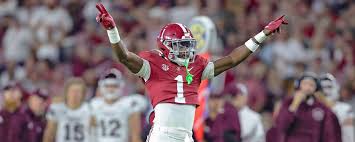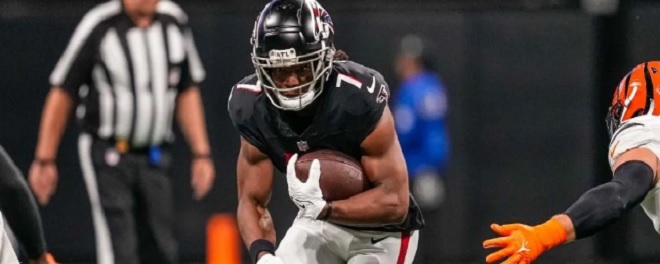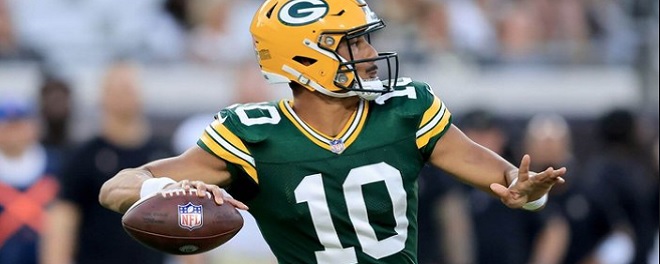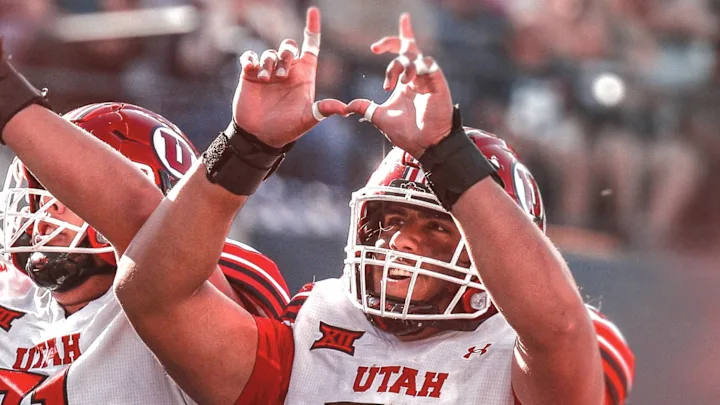Solid Starter
 Kool-Aid McKinstry, DT, Alabama – Round 2
Kool-Aid McKinstry, DT, Alabama – Round 2 
There weren’t many projections of McKinstry getting into the 40s, but after sliding to the Saints he was too good for New Orleans to pass on. Throughout the lead up to the draft, McKinstry was a consensus first-round pick. Early in the process many in the media had McKinstry as a top-10 pick, but I was first to report that teams saw him more as a late first-, or early second-rounder. McKinstry ended up being an excellent value at pick 41.
There is no doubt that the 6-foot-1, 188-pound McKinstry has the talent to play at the NFL level. He is a long cornerback that has good height, arm length, and physicality. McKinstry has zero hesitation to get physical and will not allow wide receivers to push him around. McKinstry’s best attributes are his instincts, confidence, and a natural understand of how to play the game. His innate football IQ helps to keep from getting out of position consistently.
In coverage, McKinstry is a fit as a press man corner. He has the size and strength to jam wide outs at the line to disrupt their route and timing of the play. McKinstry can reroute and uses his size to disrupt passing lanes. With good speed, McKinstry is fast enough to carry verticals downfield. He could stand to improve his targeting of the ball for interceptions rather than just slapping the pass away. McKinstry is composed and does not panic when the ball is coming towards him. He gets his head turned around in coverage doing a nice job of locating the ball while staying close to the receiver.
As a run defender, McKinstry is a willing tackler that will come downhill and cut the legs out from underneath ball carriers. McKinstry will wrap up ball carriers and shows the strength to get them to the ground. With his size, he could be a good contributor as a run defender at the pro level.
There was talk of the Saints trading veteran cornerback Marshon Lattimore this offseason, but his contract and lack of durability made him impossible to deal for equal value. While Lattimore will be back in 2024, the selection of McKinstry feels like New Orleans is prepping for moving on from Lattimore. McKinstry could form a nice trio with Paulson Adebo and Alontae Taylor in the long-term. After some development time, McKinstry could turn into a quality starter for New Orleans.
2023: Bryan Bresee
2022: Chris Olave
2021: Payton Turner
2020: Cesar Ruiz
2019: None
2018: Tre’quan Smith, WR
2017: Ryan Ramczyk, OT
2016: Sheldon Rankins, DT
2015: Hau-Oli Kikaha, LB
2014: Khairi Fortt, LB
2013: Kenny Vaccaro, S
Most Likely To Bust
 NONE
NONE
The Saints were without a third-round and fourth-round pick and I do not think that first-round pick Taliese Fuaga or second-round pick Kool-Aid McKinstry will be busts for New Orleans.
2023: Isaiah Foskey, DE
2022: Alontae Taylor, CB
2021: Ian Book, QB
2020: Zach Baun, LB
2019: Chauncey Gardner-Johnson, S
2018: Rick Leonard, OT
2017: Alex Anzalone, LB
2016: Vonn Bell, S
2015: Stephone Anthony, LB
2014: Stanley Jean-Baptiste, CB
2013: Terron Armstead, OT
Potential Boom Pick
 Taliese Fuaga, OT, Oregon State – Round 1
Taliese Fuaga, OT, Oregon State – Round 1 
The Saints entered the 2024 NFL Draft with a big need at offensive tackle and they were fortunate that this draft was loaded with talent at the position. They were in a great spot to have value and need intersect at the perfect spot. With a number of good options to select from, New Orleans took Fuaga and should have a long-term starter with big impact potential.
In pass protection Fuaga (6-5, 332) is quick out of his stance and gets in position to wall off defenders. When taking on bull rushes Fuaga gives up little ground and is able to anchor with lower body strength to keep himself from getting pushed into the quarterback. However, Fuaga has short arms and his lack of length is a problem for taking on pro edge rushers. His feet also get heavy sometimes and he does not have the feet of a left tackle. That can be a problem at the pro level as NFL defenses will move their best edge rusher around the front and he will see plenty of elite players even if Fuaga is at right tackle. Fuaga’s feet and lack of length could be problems for him at the pro level. Hence he would be better off staying at right tackle or moving inside to guard.
In the ground game Fuaga is a load as he can knock defenders off the ball and ride them out of their gap. He engulfs edge defenders and keeps them from flowing to the ball. With his ability to generate movement, Fuaga is an asset in short-yardage and goal line situations. At the point of attack he is nasty as Fuaga will get very physical and violent with defenders. With heavy hands, Fuaga shocks defenders and he can manhandle defensive linemen at that point of attack. Fuaga looks to pancake them and is a bully on the field that really beats up opponents. Fuaga moves well for his size and is quick to the second level and is a wrecking ball on the perimeter. Fuaga is on a mission to punish defenders in the open field and he will dish out some violence downfield.
There are some fears that Saints veteran right tackle Ryan Ramczyk could have his career cut short from injury. Trevor Penning has also struggled since being a first-round pick in 2022. Veteran guard Andrus Peat also left in free agency, so between guard or tackle, Fuaga should start right away for the Saints. After getting acclimated to the NFL, I think he could be a boom pick and pro bowl player for New Orleans.
2023: Kendre Miller, RB
2022: Trevor Penning, OT
2021: Paulson Adebo, CB
2020: Adam Trautman, TE
2019: Erik McCoy, C
2018: Marcus Davenport, DE
2017: Marshon Lattimore, CB
2016: Michael Thomas, WR
2015: Andrus Peat, OT
2014: Brandin Cooks, WR
2013: John Jenkins, DT
Future Depth Player
 Spencer Rattler, QB, South Carolina – Round 5
Spencer Rattler, QB, South Carolina – Round 5 
The Saints ended Rattler’s fall in the fifth round and that was a mixed spot. In the short-term, Derek Carr is the Saints established starter and Rattler will be in a competitive fight to win a backup roster spot. Rattler will have to beat out at least two of a group that includes journeyman backups Nathan Peterman, Kellen Mond, and second-year pro Jake Haener who the Saints drafted last year in the fourth round. Peterman is probably the favorite to be the No. 2 behind Carr, but the staff could be inclined to keep Rattler as the third stringer. He was a pick with a new offensive coordinator Klint Kubiak. Rattler would also be harder to keep stashed on the practice squad than Haener or Mond.
Rattler will need to impress in the preseason and if he does it isn’t out of the question that he gets consideration for playing time if Carr doesn’t play well. Rattler has an opportunity with the Saints, but as a fifth-round pick he will need to hit the ground running and impress when he gets an opportunity to stick and carve out a NFL career. I think the Saints made a smart gamble with Rattler in the fifth round as he has some serious arm talent with mobility and ad lib ability. While his ball security might keep him from becoming a starter, Rattler could at least be a capable backup as a pro.
2023: Jake Haener, QB
2022: D’Marco Jackson, LB
2021: Pete Werner, LB
2020: Tommy Stevens, QB
2019: Alize Mack, TE
2018: Natrell Jamerson, S
2017: Alvin Kamara, RB
2016: David Onyemata, DL
2015: Garrett Grayson, QB
2014: Ron Powell, OLB
2013: Kenny Stills, WR





